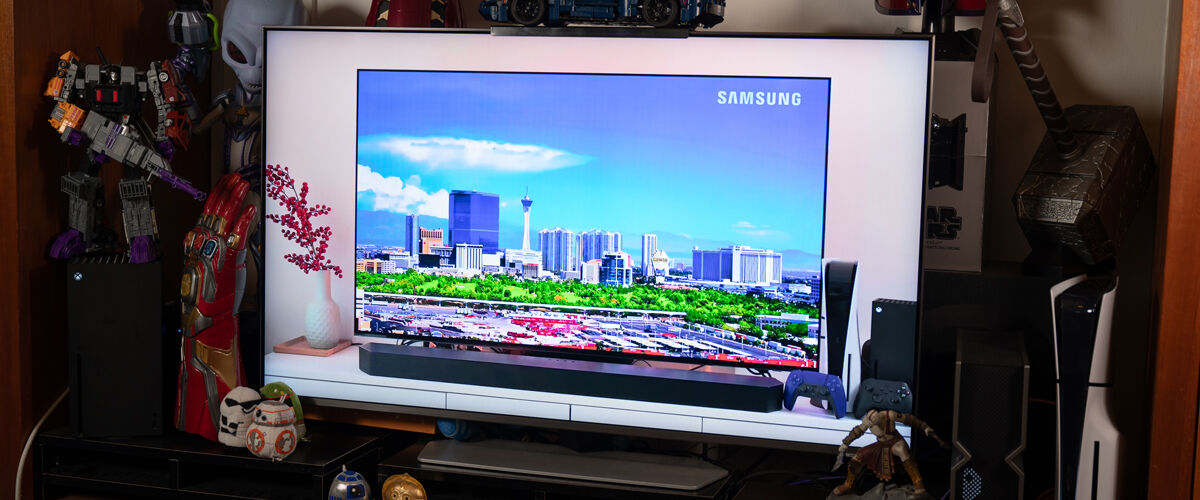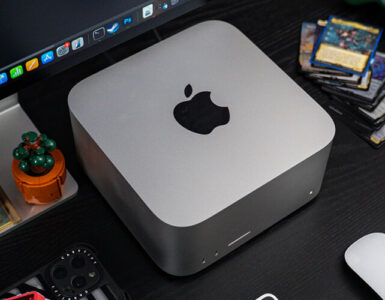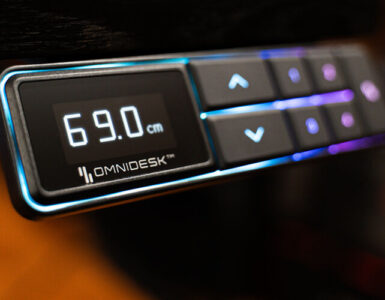Building an impressive home entertainment would be a lot simpler if there was an obvious technology that offers a clear choice in terms of price and technology, but in an environment where consumers are made to choose between two or more competing options, it’s never a clear-cut decision.
Televisions have gotten increasingly larger and while there is a race between OLED (organic light-emitting diode) and LED (light emitting diode) screens to fill homes, the significantly higher prices of OLED screens have drawn the masses towards LED but even then, the choice of LED technology is also evolving. Leading the charge on this front is Samsung’s QLED displays, which use backlight technology to illuminate the screen but enhanced by what Samung calls quantum dots (hence the Q in QLED), which is a film of microscopic molecules that supercharges the colours on the display. And its latest Samsung Neo QLED QN90C TV is a premium 4K Mini-LED TV, that delivers outstanding HDR brightness, consistent upscaling, and ample support for a variety of content without having to break the bank.
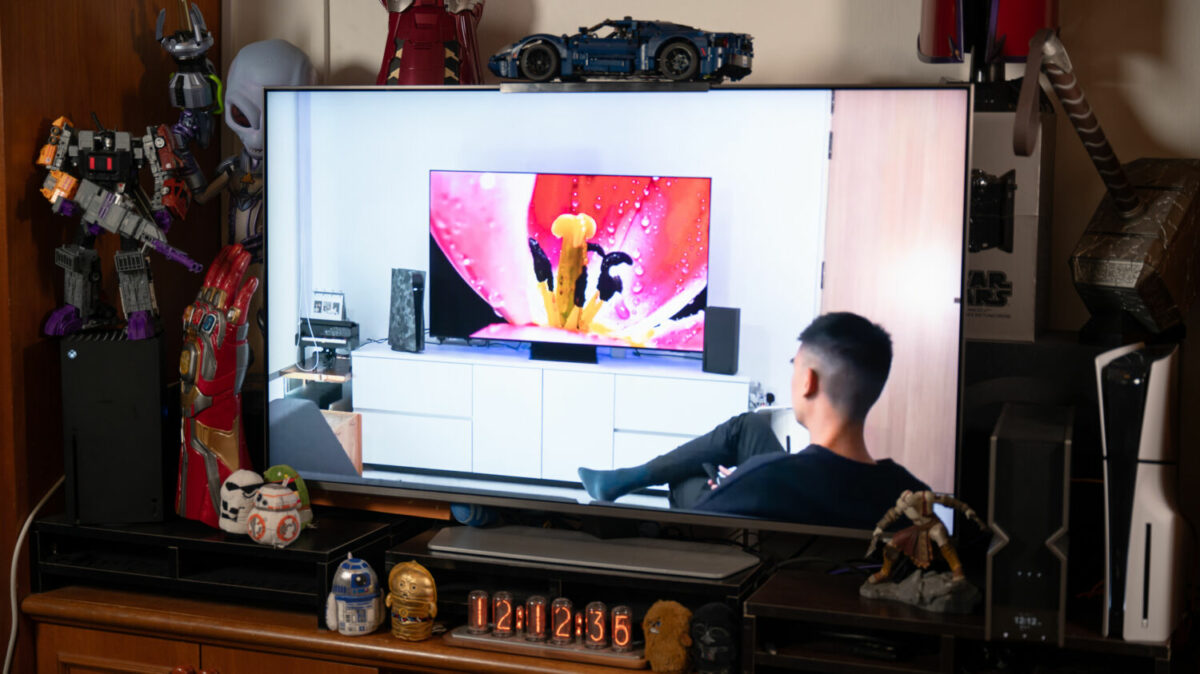
Unlike traditional LED, mini-LED technology deploys a larger number of smaller LEDs to produce brighter and more colourful images, resulting in higher colour and light graduation accuracy, otherwise known as contrast which we see as better and deeper colours across the screen. Coupled with a stronger array local dimming, bright highlights and better viewing angles, QLED displays deliver better colours and should be the display of choice when it comes to LED.
To that end, the Samsung QN90C peaks at 2,000 nits for SDR (Single Dynamic Range) and HDR (High Dynamic Range) content on its 50-inch 4K display (3,840 x 2,160). Generally, you’d want a TV to be as bright but still not lose the detail on screen. Between a special glare reduction coating and its high brightness, the TV is a great choice for watching sports during the day. Even when viewed from off-centre angles, the picture quality remains good, thanks to Samsung’s Ultra Viewing Angle technology. This gives the QN90C an advantage over LCD TVs, which often have washed-out colors when viewed from the side.
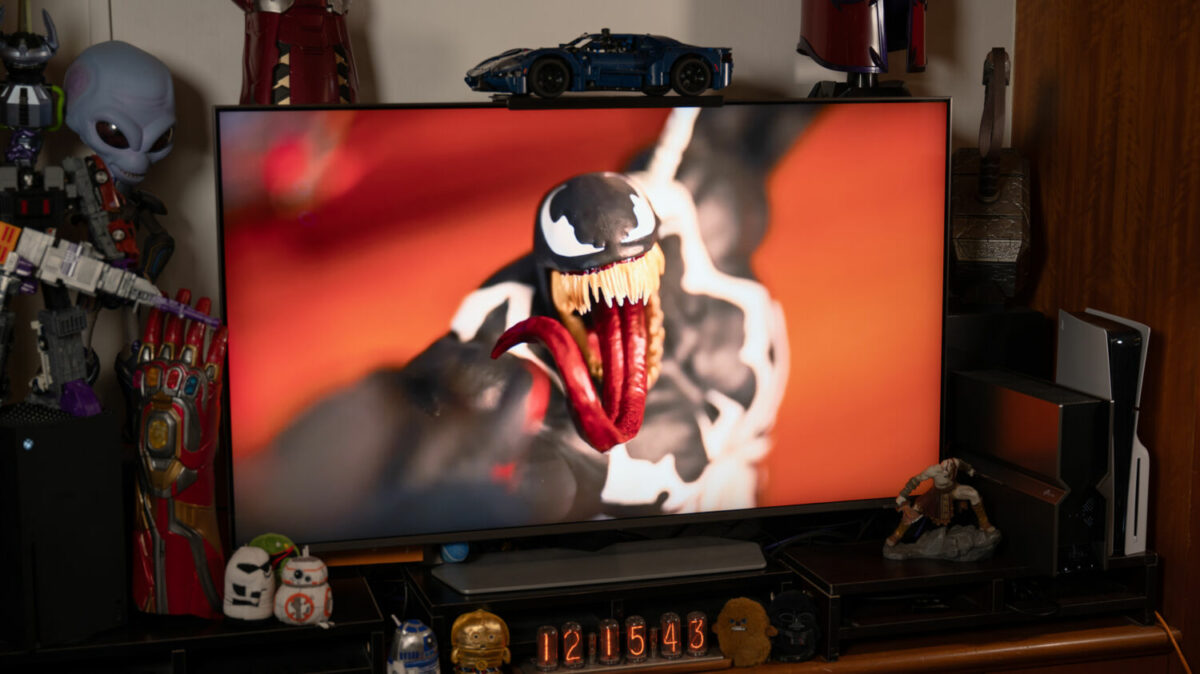
Similar to other Samsung TVs, HDR support here extends to the HDR10+, HDR10, and HLG formats, but not Dolby Vision. For the best results out of the box, it’s best to set the TV to Filmmaker mode and adjust the color settings subsequently based on our experience for this model as the colours look more true to life and not overtuned. Alternatively, the next best option would be Movie mode, which comes across as brighter but too saturated for our tastes. Like most TVs out there, the QN90C should be tweaked according to the type of content that users frequently consume.
Having a great panel, however, is only part of the equation – at the heart of the TV is Samsung’s Neural Quantum Processor 4K, enhancing the viewing experience with seamless content upscaling and it’s especially evident with non 4K content be it via streaming apps or consoles like your Nintendo Switch. It proves useful for anime in particular, which doesn’t always come in 4K, with Attack on Titan demonstrating its prowess. As Eren lays waste to the War Hammer Titan in Titan form, not only does one get a good sense of fear and anguish, the glint of light emerging from the explosion – caused by cracking open the latter’s crystal form – looks stunning when viewed from all angles. This excellent light control and reduction of blooming is handled well by the TV as the scene changes from bright to dark in quick succession.
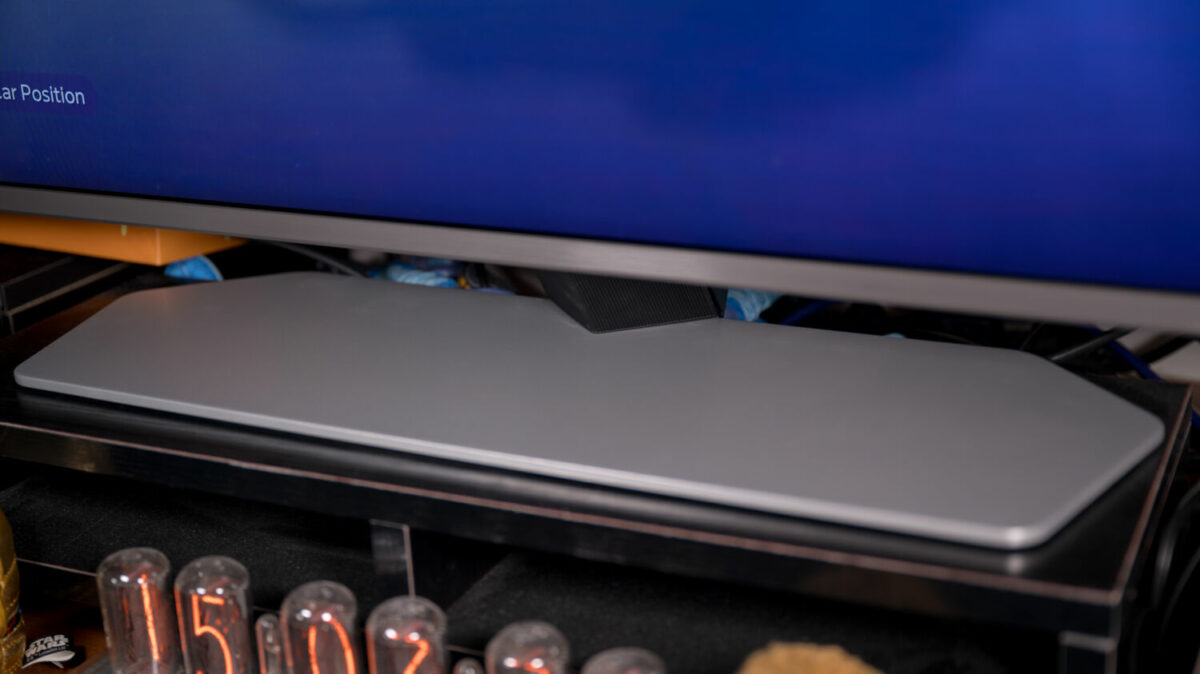
Despite its modest price tag, the TV maintains a consistent design language. It features an aluminum, center-mounted hexagonal plate stand that cuts a slender profile when viewed from the side.
Samsung’s svelte design necessitates an equally slim side-mounted panel for the TV’s input section, which offers four HDMI 2.1 ports, along with USB, optical digital audio, and RF antenna connections – all located on the right side. However, do note that some additional cable management is needed for thicker HDMI cables, as the rear panel only allows thinner cables of 0.5cm of width to pass through.
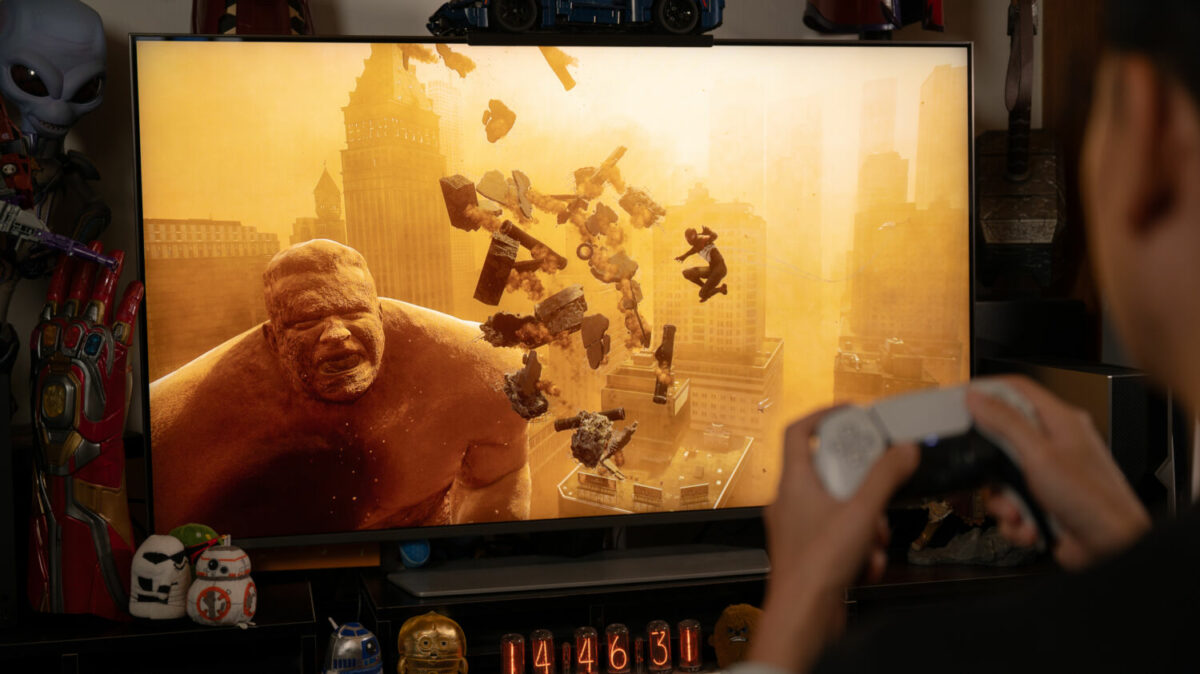
A gamer’s dream with its full suite of HDMI 2.1 ports, the Samsung QN90C also supports 120Hz gaming on 4K, and features a variable refresh rate (VRR) and FreeSync Premium to eliminate screen tearing and stuttering. This means that you can enjoy smooth and responsive gameplay on your next-gen console, no matter which port you connect it to. In addition, the Auto Low Latency Mode makes it possible for the TV to achieve a 10.2-millisecond response time, and adapt to the connected platform (such as a PC or modern console) accordingly.
Based on our gaming tests so far, we’ve put the game through Starfield (with a PC plugged in), Armored Core VI, Assassin’s Creed Mirage, and Spider-Man 2 on the PS5, the TV has been able to perform brilliantly. Even as the action heats up on the screen with Armored Core VI, there’s little screen tearing as the display keeps up well with the action. While the Xbox Series X does not get enough games to show off the prowess of the Samsung QN90C, Starfield does well to show how much potential the TV holds as planets come to life with rich colors.
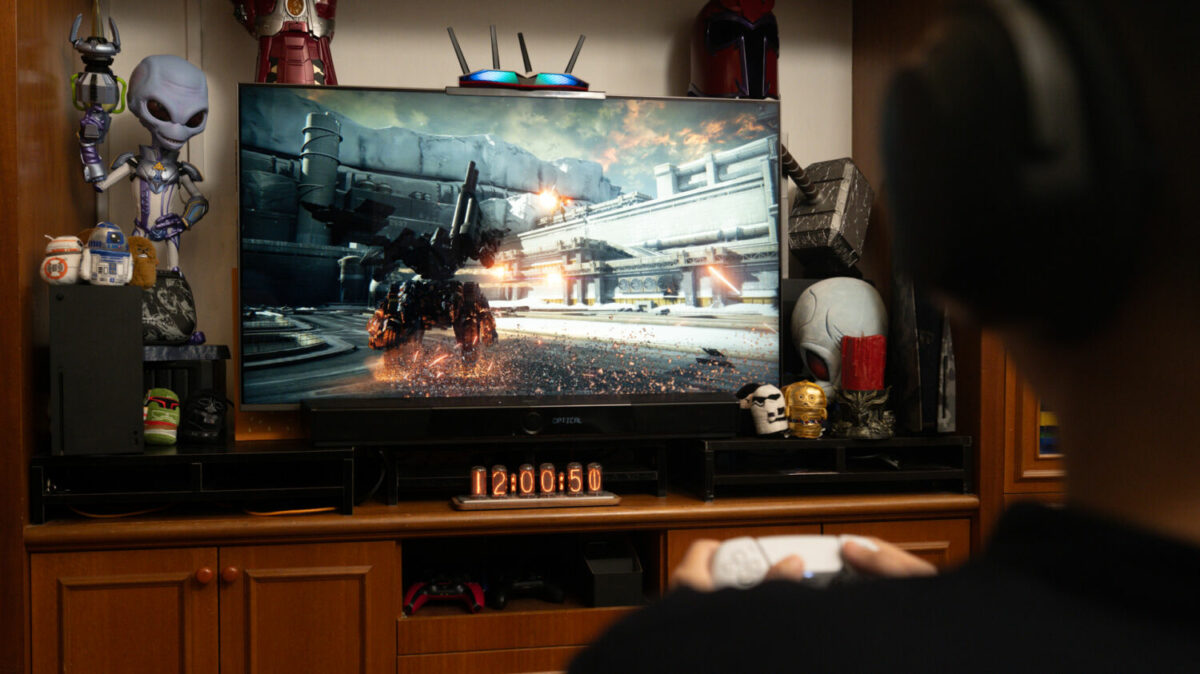
All in all, it pretty much checks off all the key features gamers should expect on a modern display. By default, the gaming display settings could do with a few tweaks as the original calibration projects an image that can look overly bright (possibly, Mini LED tech working hard to show off its value). That won’t be an issue once the panel is adjusted accordingly, however – on Armored Core VI, it kept up easily with fast-moving action and retained every sharp detail.
Players who hate screen glare will appreciate the anti-glare film, which keeps the image focused by eliminating distractions.
On the audio front, the Samsung QN90C has a built-in front-firing speaker system that creates a wide and immersive soundstage for Atmos soundtracks. This is helped by the TV’s Object Tracking Sound Plus feature, which tracks objects and content on screen and directs the sounds to the appropriate speaker thus allowing sound to move with the action. However, the TV’s thin design means that it doesn’t have much bass, so movies with bass-heavy soundtracks won’t sound as good.
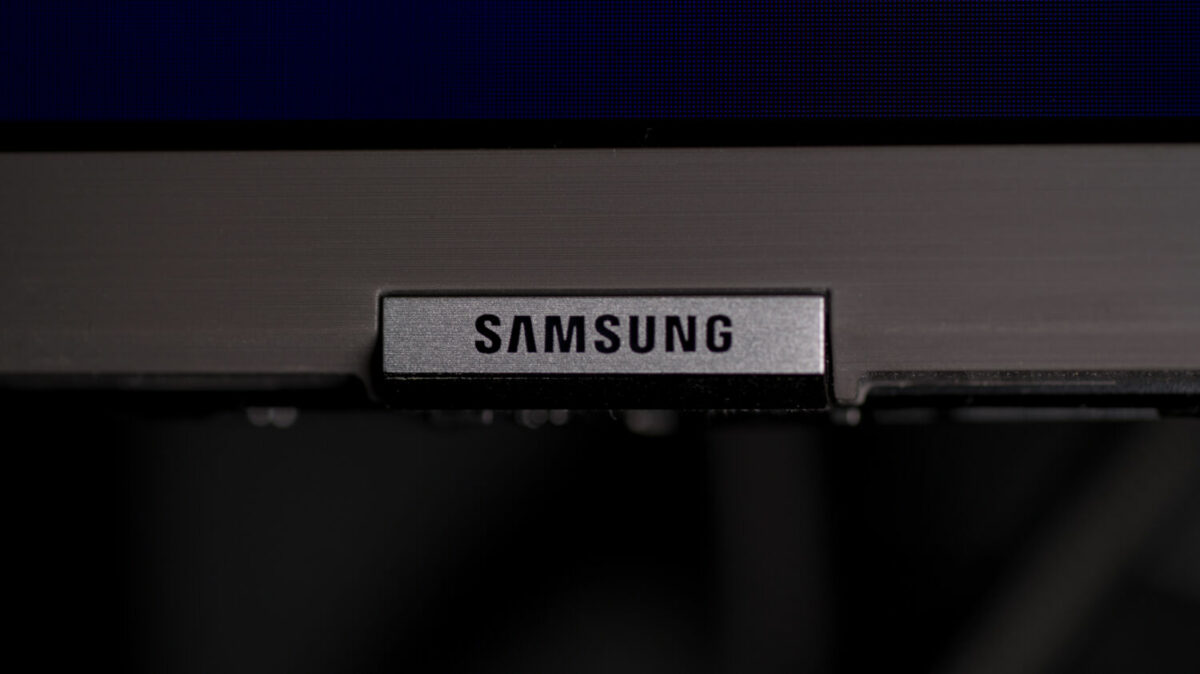
Pushing the volume too high can also cause the audio to compress and lose its spatial depth.
For most instances, we would recommend activating the Amplify setting for louder and clearer audio. Samsung would love for users to pair the TV with their own of Samsung’s Q- or S-Series soundbars, as its Q-Symphony feature allows users to combine their built-in speakers with them. But, it’s not something you’d want to get out of the box right away and can be an addition over time.

Wrapping up the entire package is Tizen OS which has improved over the years but still falls short. In comparison to other TV brands, Tizen has much to catch up on when it comes to overall performance but it’s largely a matter of getting used to it. A major concern is how difficult it can be for first-timers or newcomers to find certain settings, which may be nestled too deep into the system. With all the main streaming platforms on Tizen, getting your Netflix, Disney+, or HBO fix is no issue at all.
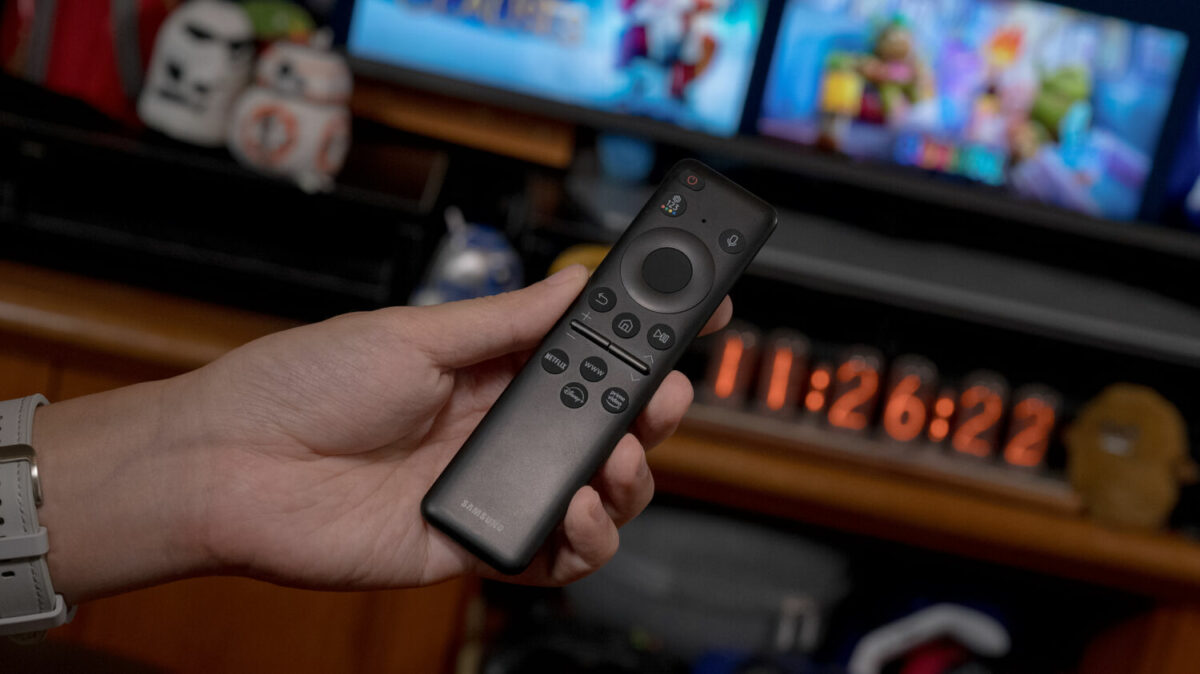
The included remote control is as compact as others in the same-gen lineup. Much of the navigation is carried out via a central trackpad, with a button on top to activate voice commands.
Unlike most conventional builds, this remote control doesn’t require a battery. Instead, it harvests power from a solar cell located on its backside and can be charged with indoor lighting.
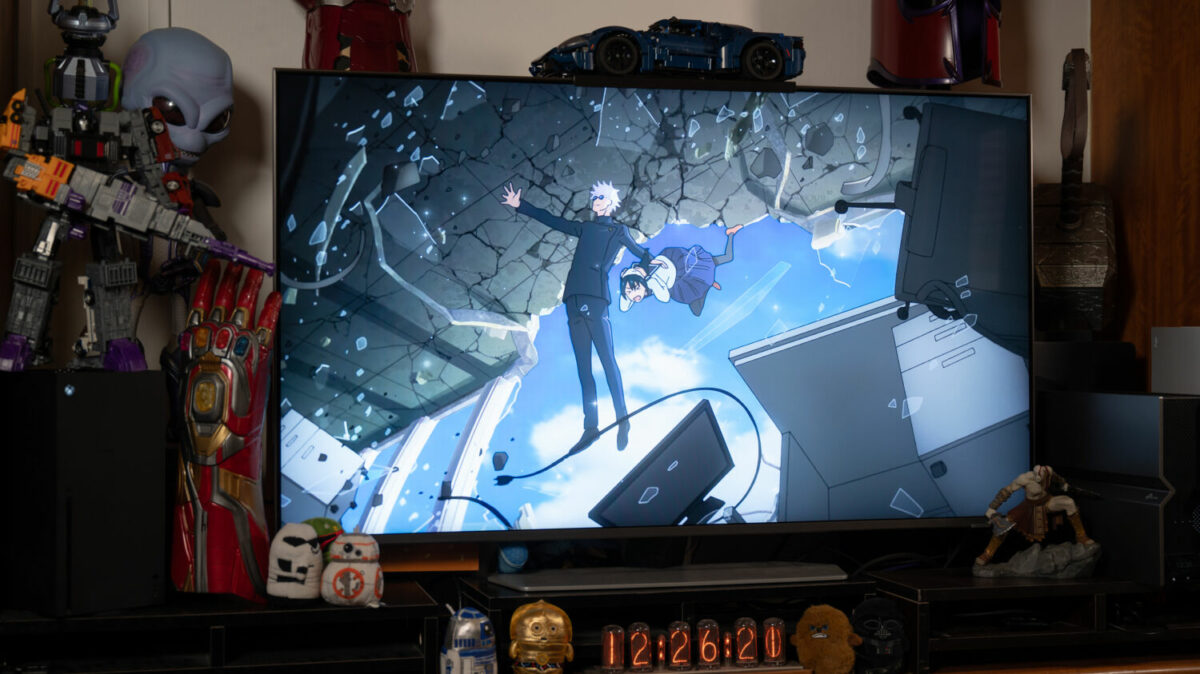
Depending on your use case and budget, the Samsung QN90C finds its sweet spot for price and features for the smaller screen models. The base 43-inch model is priced at S$2,199, but the price jumps to S$2,699 for this 50-inch review unit, before topping out at 75 inches for S$8,099. Ultimately, the QN90C shines when it comes to value-for-money performance, as users get to enjoy one of the brightest displays on the current market without having to bust their budget. The only temptation would be the Samsung S95C OLED TV, which makes it difficult to look away once you’ve laid eyes on it. But again, that’s for a different audience altogether.
GEEK REVIEW SCORE
Summary
A solid TV all round, Samsung’s QN90C QLED TV illustrates the tech still is able to hold its own against OLED displays by being one of the best picks on the current market.
Overall
8/10-
Aesthetics - 8/10
8/10
-
Build Quality - 8/10
8/10
-
Performance - 8/10
8/10
-
Value - 8/10
8/10
-
Geek Satisfaction - 8/10
8/10
Gerald currently straddles between his love of video games and board gaming. There’s nothing that interests him more than trying out the newest and fanciest gadget in town as well. He dreams of publishing a board game sometime in the future!

